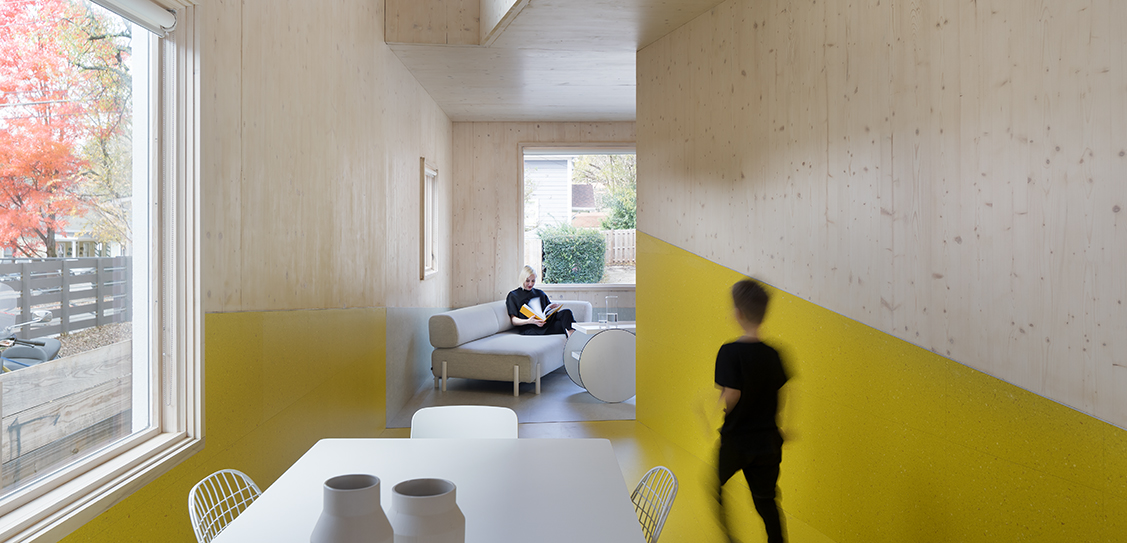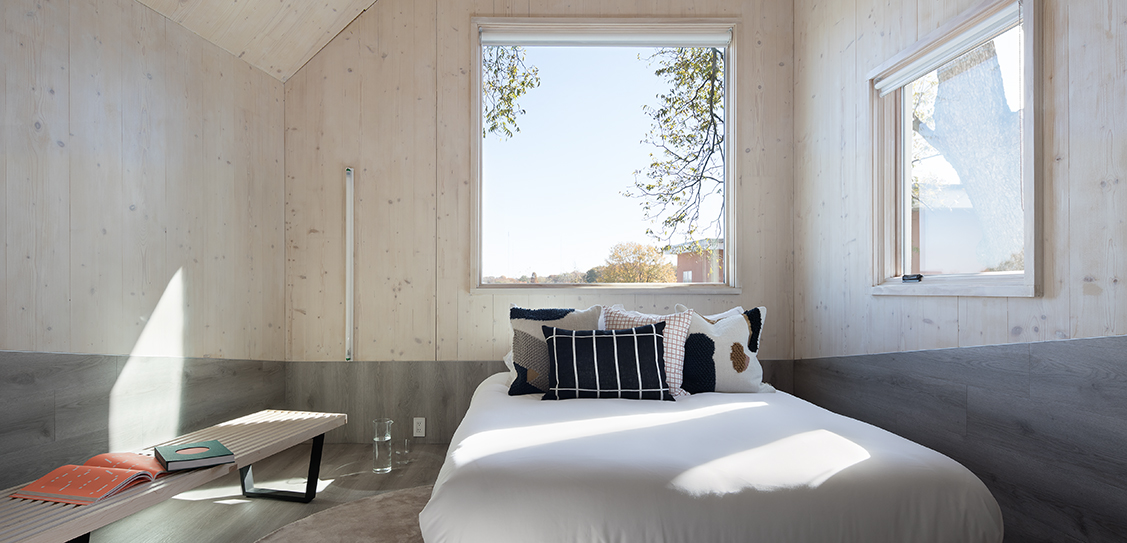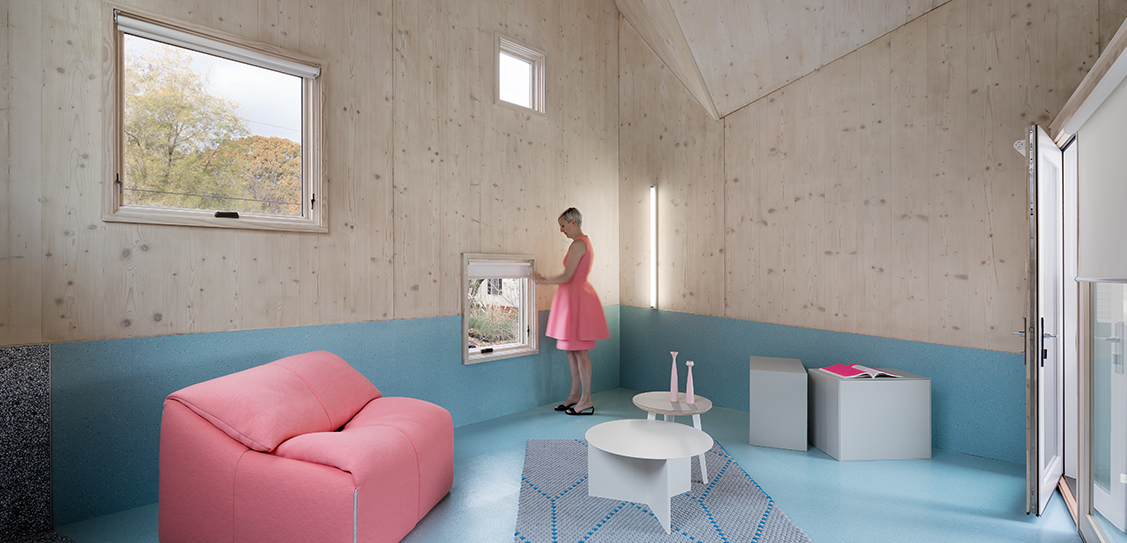“Mass Timber and the Scandinavian Effect” was a Spring 2020 studio at Harvard University’s Graduate School of Design (GSD) that explored contemporary patterns of innovation around mass timber that combine material, structural advancement, constructability, and architectural form.
The studio was initiated and led by Associate Professor Jennifer Bonner, who is the founder and principal of Portland based architectural practice MALL, and structural engineer Hanif Kara, a cofounder of AKT II, a London based engineering consultancy and Professor in Practice of Architectural Technology at the GSD. The first half of the studio was conducted in person, while the remainder was taught remotely, due to COVID-19.
The studio posits a “Scandinavian Effect”, similar to the Bilbao Effect, which perpetuated an explosion of architecture forward cultural institutions as an urban strategy, or the Chicago Effect, which revolutionised steel construction. In this case, Bonner and Kara hypothesise that the current pioneering use of mass timber to build at all scales in Scandinavian countries goes beyond the material’s aesthetic or technical qualities to represent a shift in values, and the beginning of a paradigm shift in the role of mass timber in building around the globe.
In particular, Bonner and Kara argue for the potential growth in the use of mass timber in the United States, and through the studio they developed at Harvard, attempt to initiate a more inclusive conversation between the construction industry and design field.
The studio drew upon Bonner and Kara’s own respective past work, in particular, their 2018 collaboration on Haus Gables, a single family residential home made of cross-laminated timber (CLT) in Atlanta, Georgia. Designed and developed by Bonner, and engineered by Kara and AKT II, the house is one of only a handful of residences in the United States made of CLT, an exceptionally strong wood material produced by gluing together layers of lumber that alternate in direction.
With Haus Gables as a precedent, Bonner and Kara asked their students to further explore mass timber, a material widely used in construction overseas but is new to the US market, and its potential to challenge traditional building methodologies and processes. According to Kara, "The use of mass timber and CLT combined with new design and fabrication methods, offers an optimistic, tangible solution to the future of designing environmentally responsible spaces as well as addressing the global challenges of climate change.”
Environmentally sound attributes of mass timber include quick and efficient construction assembly and erection, thermally sound solid timber walls, and minimal waste. The potential vast reduction in building industry carbon dioxide emissions by using mass timber is currently being studied as well. “Trees that are harvested at the right stage in a sustainable managed forest and converted to mass timber, will ‘lock in’ the carbon stored within them into the material” explains Kara, thereby ‘sequestering’ carbon within a building, rather than contributing to carbon emissions, as in traditional steel or concrete construction.
Students were asked to use mass timber to create two projects over the course of the semester; a single family house and a mid-rise office tower located in Raleigh-Durham North Carolina, predicated on the position that wood would not only be used as an aesthetic or representational device, but also as a tectonic or structural question.
Framed by “The Scandinavian Effect”, the students took a close look at Sweden as a case study for a series of research questions around mass timber visiting manufacturers, building sites, and completed projects. Then, using mass timber to foreground the design work, they looked towards the American South and specifically Raleigh-Durham, North Carolina to put their ideas into practice. Like Scandinavia, where mass timber plants are prevalent; Dothan, Alabama is home of the first and biggest CLT manufacturing plant in the Eastern United States. Additionally, Bonner’s background as a Southerner as well as her designing and developing Haus Gables in Atlanta, Georgia, were an impetus for the siting of this studio in the American South. Raleigh-Durham, North Carolina, as a mid-sized city and centre for education and scientific research, has a need for varying building typologies, and served as a fertile test context for the students’ projects.
For Haus Gables, Bonner implemented the use of solid CLT panels for all exterior and interior walls, floors, and roof. Custom cut, hoisted into place, and assembled in only fourteen days’ time, the CLT in Haus Gables enables a solid house that eschews stick frame construction. Structurally inventive, the panels also promote a monolithic view of the material from the domestic interior. Furthermore, rather than designing the house around the floorplan, Bonner used the “roof plan” to organise the spatial layout of the house, which was supported by the panel construction method afforded by CLT.
Similarly, students were asked to position CLT as a series of large structural sheets or blanks comprised of three, five, and seven ply laminated timber panels measuring nine feet by 50 ft, with endless possibilities for openings, shape, and geometry to design their speculative housing and mid-rise tower projects.
From these experiments, two main themes in relation to the innovative use of mass timber became prevalent. Kara reflects on the studio results, “For single family housing projects, the two way spanning capacity of CLT allowed for roofs to behave as ‘shell structures’ embracing new living space in what was otherwise attic space. While at the scale of the mid-rise tower, CLT sheets performed both architecturally and structurally, making a compartmentalised space and questioning the open floor plan of the past.”
The experimentation and use of mass timber in all of the projects, both built and speculative, demonstrate the potentiality of the material to challenge traditional models of architecture and building in relation to form, scale and proportion as well as sustainability, aesthetics and value. For Bonner and Kara, the material also brought out the criticality of the working relationship between architect and engineer. Counter to the traditional view that architects design against the resistance of the engineer, Bonner and Kara see the relationship as one of co-creation rather than conflict. As Bonner suggests, “If you think about noteworthy architecture over time, most are examples of strong design, as well as of structural advancement.”
The class will culminate in an upcoming public symposium at Harvard’s GSD in February 2021, aiming to move beyond default topics of instrumentality and technology in mass timber by collecting unique positions from a group of architects, engineers, developers and manufacturers in contemporary design, while also underscoring the value of intellectualising these topics. An accompanying book around the studio and its research will feature essays by leading architects, designers, engineers and developers, including Bonner and Kara themselves.



